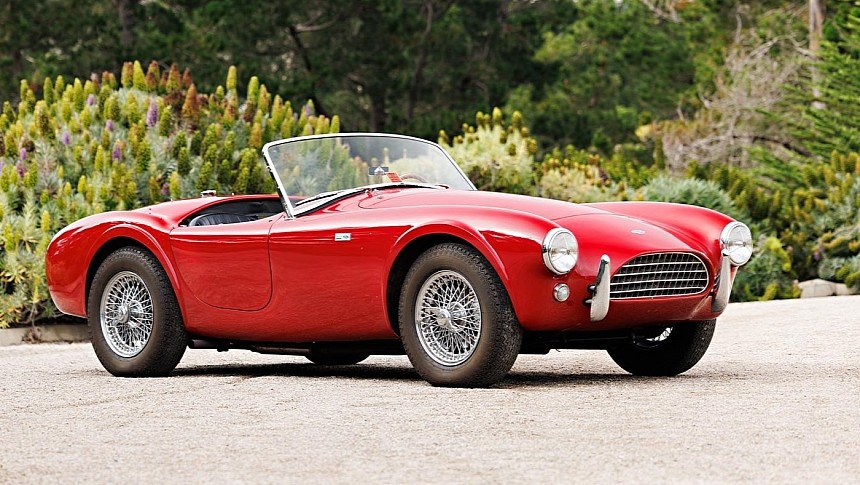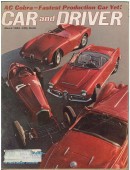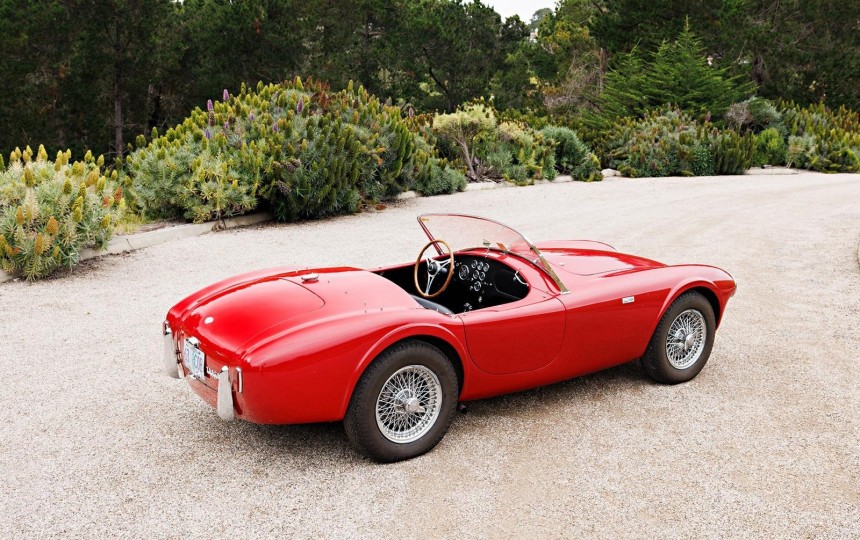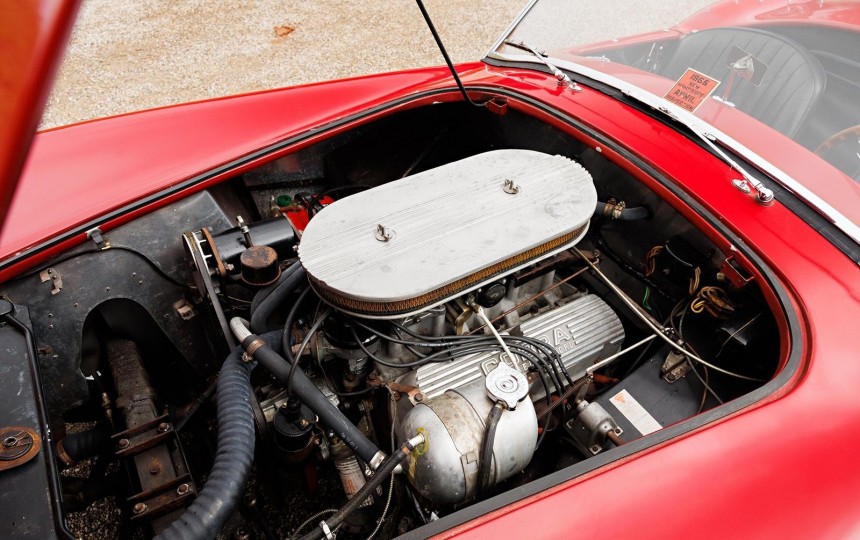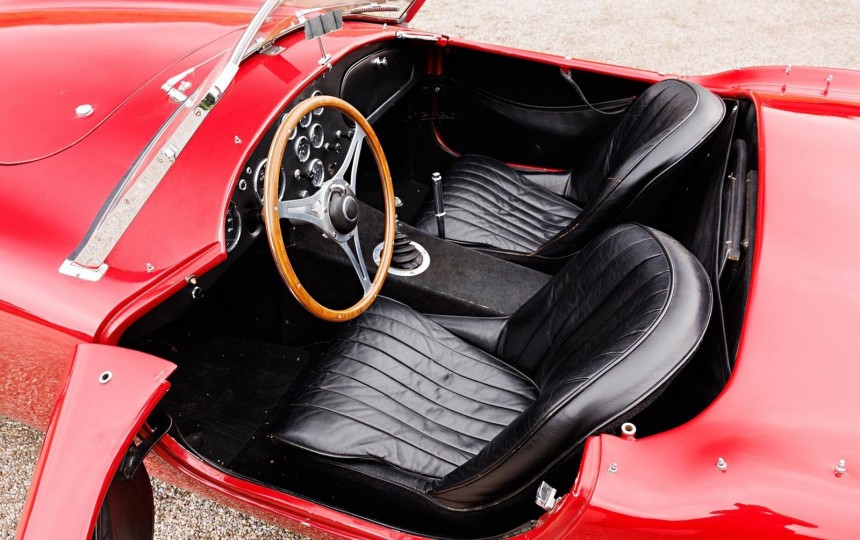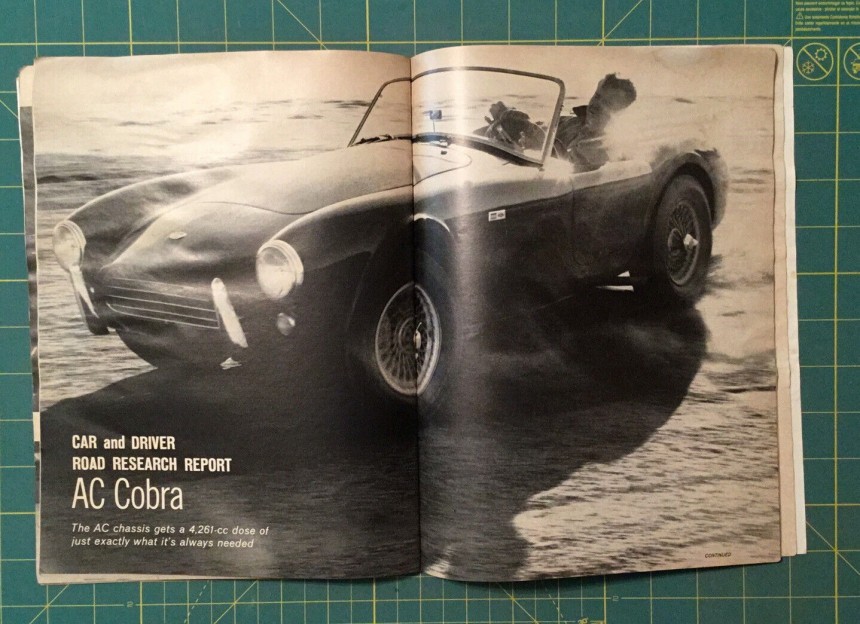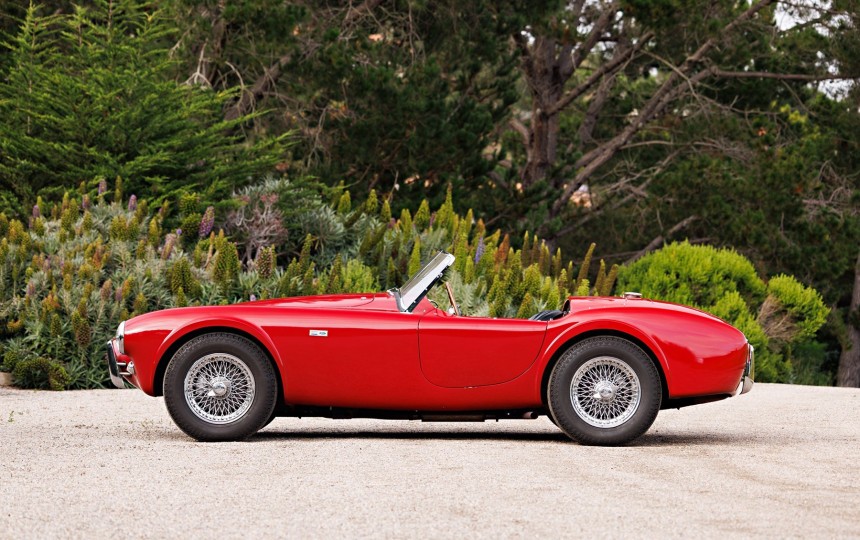In the rarefied and increasingly stratospherically high-priced realm of sportscars, one that, even whispered in the softest voice among the roar of the INDY 500, is guaranteed to stop any conversations. It is, of course, not an Italian thoroughbred, not a Japanese piston-katana, not a German laser-precise boxing machine, and not a British lord of speed.
It is the essence of American sportscars; it’s not a Chevrolet, but quite the opposite of the famed Corvette. Some might say it was its Nemesis when it came to be, although that might simply be a hot-headed statement by purists. The Shelby Cobra is the first demonstration of Carroll’s brilliant response to the age-old raw power and supreme agility conundrum.
Granted, the Texan chicken farmer wasn’t the first to have the idea of mating a delicate British frame with an American V8, but he nailed it in the head with the Cobra. The car made the man famous outside racing circles. Despite his triumph at Le Mans in 1959, the rest of Planet Piston wasn’t very much aware of the former race driver in the early 60s.
Carroll approached General Motors for their small-block V8 with the express intention of putting it in the A.C. Ace body. Naturally, the biggest carmaker in the world at that time immediately turned him down, as that would have been a natural predator for Chevrolet’s Corvette. (Remember how the first-generation Corvette was already in trouble looking up to Ford’s Thunderbird sales figures).
So Shelby did precisely that: went to Ford to ask for an engine. Ford wasn’t shy to hit its enemies while they were on the ground, so a deal was struck. That’s how the first Shelby Cobra was made possible, and in late ’61, Chassis CSX2000 got Ford’s 260-cubic-inch (4.3-liter) V8. The rest is history, and one particular car can testify to this.
A red Shelby Cobra was born about a year after Shelby American, Ford Motor Company, and A.C. Cars, Ltd. agreed to cooperate. In October 1962, chassis CSX2034 was billed to Shelby American, and the car’s body crossed the Atlantic. The following month, Tasca Ford of East Providence, Rhode Island, received a $4,995 invoice for the automobile.
Was it a high price? Perhaps, considering that a C1 Corvette from 1961 started at $3,934. But The Cobras weren’t fooling around, and the 260 V8 quickly showed everyone what they would get for the money.
Although the Shelby Cobra is generally associated with the famous 289 and the iconic 427 engines, the first 75 cars had the 260 Hi-Po Ford V8. The number includes street cars (62 of them, hand built between late 1961 and 1963), factory team cars, independently prepared race cars, and one Dragonsnake.
Chassis CSX2034 is one of the few survivors of the first Cobras, the leaf-spring small-block sportscars that would eventually evolve into the race-winning legends of later years. Only 655 examples of Carroll Shelby’s primordial car got the leaf-spring suspension.
This unit featured here had a good life – it only garnered 5,200 miles / 8,370 km since it left the Shelby shop assembly line, mainly because its original owner had a lead right foot. It sounds like a paradox, I know, but hear me out. The 35th Shelby Cobra ever made was acquired in early 1963 by a certain James Hall of Concord, New Hampshire.
The man probably read the March 1963 Car and Driver article about the Shelby Cobra after the magazine performed a series of drive tests with the new sensation of the motoring universe. This very car starred in their story, and the journalists were somewhat critical of the car’s streetability (see the gallery for more details).
They were also very pleased with its performance as a sportscar. “Coupling the stout AC chassis and lightweight AC body with a souped-up Ford engine, Shelby has come up with an extremely track-worthy sports car of very high performance indeed. (…) the car must be considered in light of its true purpose—SCCA class warfare. For such usage, it is accurately aimed, and viewed in that light, the secondary considerations such as street use must necessarily come off second best.”
The above-mentioned Mr. Hall must have liked the go-fast part of the story, so he bought chassis CSX2034. Not very happy with the car’s performance, he returned to the dealer – Grappone Ford of Concord, Hew Hampshire – and had a trio of twin-choke two-barrel carbs fitted for extra power.
Initially, the single carburetion gave the 260-CID V8 a 260-hp/264-PS output. The triple two-barrels added some 15 horses on top of that. The close-ratio manual four-speed gearbox, independent suspensions (with transverse leaf-springs), and disc brakes all-around made it very, very, very hard to resist speed temptation. But the newly-added triad of carbs made it even more so.
That’s what got Jim Hall in trouble. Within a matter of months, the happy Cobra owner lost his driving license following a downpour of speeding citations. In December of 1963, the owner put the car for sale after adorning his sportscar with some 1,000 miles (1,610 km) on the odometer.
Ironically, the same magazine – Carand Driver – had the honor of mentioning this particular machine again in the “For Sale” pages. “AC Cobra 1963 260. 1,000 original miles, never raced. Six Blue Streak tires. Ready to go."
The Shelby Registry immortalized the sale of the car in these memorable words: “When a buyer failed to materialize, Hall asked Stan Hallinan (author’s note: a Grappone Ford employee) to do him the immense favor of taking the car at a bargain price. Hallinan, ever the martyr, took the car off Hall's hands and has preserved (it) in its original condition ever since.” Until 2013, to be specific, when the car was sold to its current owner at the Quail Lodge Auction in Carmel, California, ten years and two days ago, the price – including premium – was a hefty two million dollars.
The car was used for two more years after the sale in 1964, after which it was stored in a dry barn with some 4,200 miles on the clock (6,758 km). It is believed to be one of the lowest-mileage, best-looking Shelby Cobra 260 in existence, and it is for sale again. The bid starts at $875,000, and the estimated price is between $1,750,000 and $2,500,000.
Granted, the Texan chicken farmer wasn’t the first to have the idea of mating a delicate British frame with an American V8, but he nailed it in the head with the Cobra. The car made the man famous outside racing circles. Despite his triumph at Le Mans in 1959, the rest of Planet Piston wasn’t very much aware of the former race driver in the early 60s.
Carroll approached General Motors for their small-block V8 with the express intention of putting it in the A.C. Ace body. Naturally, the biggest carmaker in the world at that time immediately turned him down, as that would have been a natural predator for Chevrolet’s Corvette. (Remember how the first-generation Corvette was already in trouble looking up to Ford’s Thunderbird sales figures).
A red Shelby Cobra was born about a year after Shelby American, Ford Motor Company, and A.C. Cars, Ltd. agreed to cooperate. In October 1962, chassis CSX2034 was billed to Shelby American, and the car’s body crossed the Atlantic. The following month, Tasca Ford of East Providence, Rhode Island, received a $4,995 invoice for the automobile.
Was it a high price? Perhaps, considering that a C1 Corvette from 1961 started at $3,934. But The Cobras weren’t fooling around, and the 260 V8 quickly showed everyone what they would get for the money.
Chassis CSX2034 is one of the few survivors of the first Cobras, the leaf-spring small-block sportscars that would eventually evolve into the race-winning legends of later years. Only 655 examples of Carroll Shelby’s primordial car got the leaf-spring suspension.
This unit featured here had a good life – it only garnered 5,200 miles / 8,370 km since it left the Shelby shop assembly line, mainly because its original owner had a lead right foot. It sounds like a paradox, I know, but hear me out. The 35th Shelby Cobra ever made was acquired in early 1963 by a certain James Hall of Concord, New Hampshire.
They were also very pleased with its performance as a sportscar. “Coupling the stout AC chassis and lightweight AC body with a souped-up Ford engine, Shelby has come up with an extremely track-worthy sports car of very high performance indeed. (…) the car must be considered in light of its true purpose—SCCA class warfare. For such usage, it is accurately aimed, and viewed in that light, the secondary considerations such as street use must necessarily come off second best.”
The above-mentioned Mr. Hall must have liked the go-fast part of the story, so he bought chassis CSX2034. Not very happy with the car’s performance, he returned to the dealer – Grappone Ford of Concord, Hew Hampshire – and had a trio of twin-choke two-barrel carbs fitted for extra power.
That’s what got Jim Hall in trouble. Within a matter of months, the happy Cobra owner lost his driving license following a downpour of speeding citations. In December of 1963, the owner put the car for sale after adorning his sportscar with some 1,000 miles (1,610 km) on the odometer.
Ironically, the same magazine – Carand Driver – had the honor of mentioning this particular machine again in the “For Sale” pages. “AC Cobra 1963 260. 1,000 original miles, never raced. Six Blue Streak tires. Ready to go."
The car was used for two more years after the sale in 1964, after which it was stored in a dry barn with some 4,200 miles on the clock (6,758 km). It is believed to be one of the lowest-mileage, best-looking Shelby Cobra 260 in existence, and it is for sale again. The bid starts at $875,000, and the estimated price is between $1,750,000 and $2,500,000.
